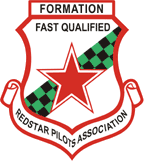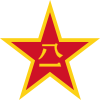
Main menu
You are here
Flight Training
Flight training began with a full systems briefing. We talked about every aspect of the aircraft, with detailed discussions of maintenance items and the pneumatic systems. I found myself crawling around underneath the aircraft, opening access covers and generally getting my hands dirty. Great fun!
We moved on to startup/shutdown procedures. I would recommend a small velcro strap of some sort to hold the brakes during startup and run-up. I felt a little like I needed three hands!
Taxiing without nose wheel steering was a bit different for me as a pilot who flew mostly Cessna 172s. It didn't take much time to get used to it and build confidence that I wouldn't run into anything. The best way to describe the steering is like steering a boat - you have to anticipate where the aircraft will come out of the turn.
Getting the plane in the air was pretty straight forward. The right turning tendency was less of a problem than I expected. Just keep the nose of the aircraft down the centerline and keep the ball centered in climb.
In the air, the plane is very stable, yet quite nimble. Control forces are very light. Since my initial training, I've flown both the 923YK and a C182 on the same day. The C182 seems a lot more work to fly. Stalls were very benign. There's no tendency to drop a wing. Recovery is immediate. Steep turns are a blast. The airplane really likes the bank and I don't notice an over-banking tendency found in the C172 or C182. I'm finding myself using 45° banks instead of gentle 15° or 20° turns - just cause it's fun. Sometimes, a 60° bank for a 340° heading change is desired. I don't think I'd do that in a C172.
Cruise flight is very comfortable. The visibility is excellent. In fact, that's the first thing every passenger has said. With a Vne of 200 knots, descents can be accomplished at cruise power, just trim nose-down for -1000 fpm and let it go.
Landing is a bit different. Since the flap is either up or down (0° or 40°), your approach path is very steep. Every touch down seems to be firm. Control of the nosewheel touchdown is important.
This airplane is the reason I learned to fly.
- Log in to post comments
